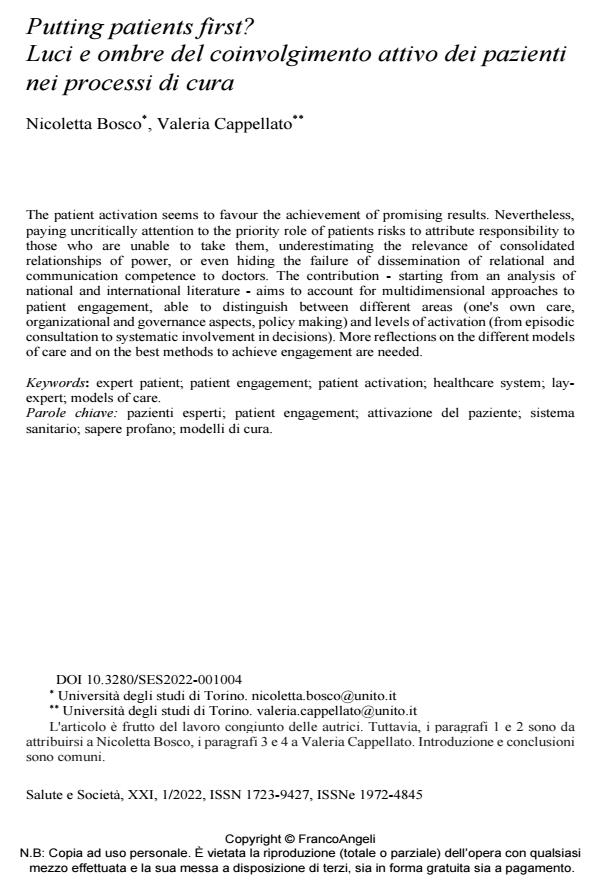Putting patients first? Luci e ombre del coinvolgimento attivo dei pazienti nei processi di cura
Titolo Rivista SALUTE E SOCIETÀ
Autori/Curatori Nicoletta Bosco, Valeria Cappellato
Anno di pubblicazione 2022 Fascicolo 2022/1
Lingua Italiano Numero pagine 15 P. 48-62 Dimensione file 185 KB
DOI 10.3280/SES2022-001004
Il DOI è il codice a barre della proprietà intellettuale: per saperne di più
clicca qui
Qui sotto puoi vedere in anteprima la prima pagina di questo articolo.
Se questo articolo ti interessa, lo puoi acquistare (e scaricare in formato pdf) seguendo le facili indicazioni per acquistare il download credit. Acquista Download Credits per scaricare questo Articolo in formato PDF

FrancoAngeli è membro della Publishers International Linking Association, Inc (PILA)associazione indipendente e non profit per facilitare (attraverso i servizi tecnologici implementati da CrossRef.org) l’accesso degli studiosi ai contenuti digitali nelle pubblicazioni professionali e scientifiche
The patient activation seems to favour the achievement of promising results. Nevertheless, paying uncritically attention to the priority role of patients risks to attribute responsibility to those who are unable to take them, underestimating the relevance of consolidated relationships of power, or even hiding the failure of dissemination of relational and communication competence to doctors. The contribution - starting from an analysis of national and international literature - aims to account for multidimensional approaches to patient engagement, able to distinguish between different areas (one's own care, organizational and governance aspects, policy making) and levels of activation (from episodic consultation to systematic involvement in decisions). More reflections on the different models of care and on the best methods to achieve engagement are needed.
Parole chiave:pazienti esperti; patient engagement; attivazione del paziente; sistema sanitario; sapere profano; modelli di cura.
Nicoletta Bosco, Valeria Cappellato, Putting patients first? Luci e ombre del coinvolgimento attivo dei pazienti nei processi di cura in "SALUTE E SOCIETÀ" 1/2022, pp 48-62, DOI: 10.3280/SES2022-001004